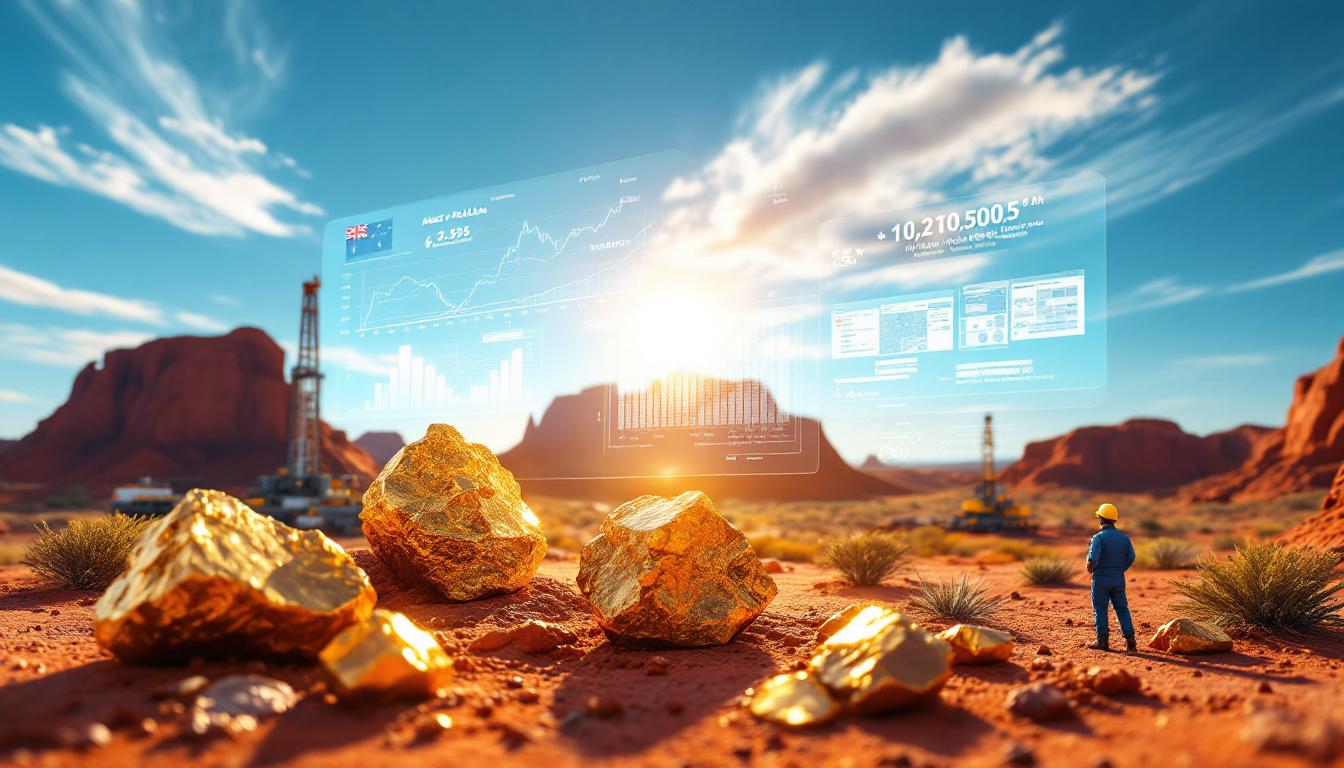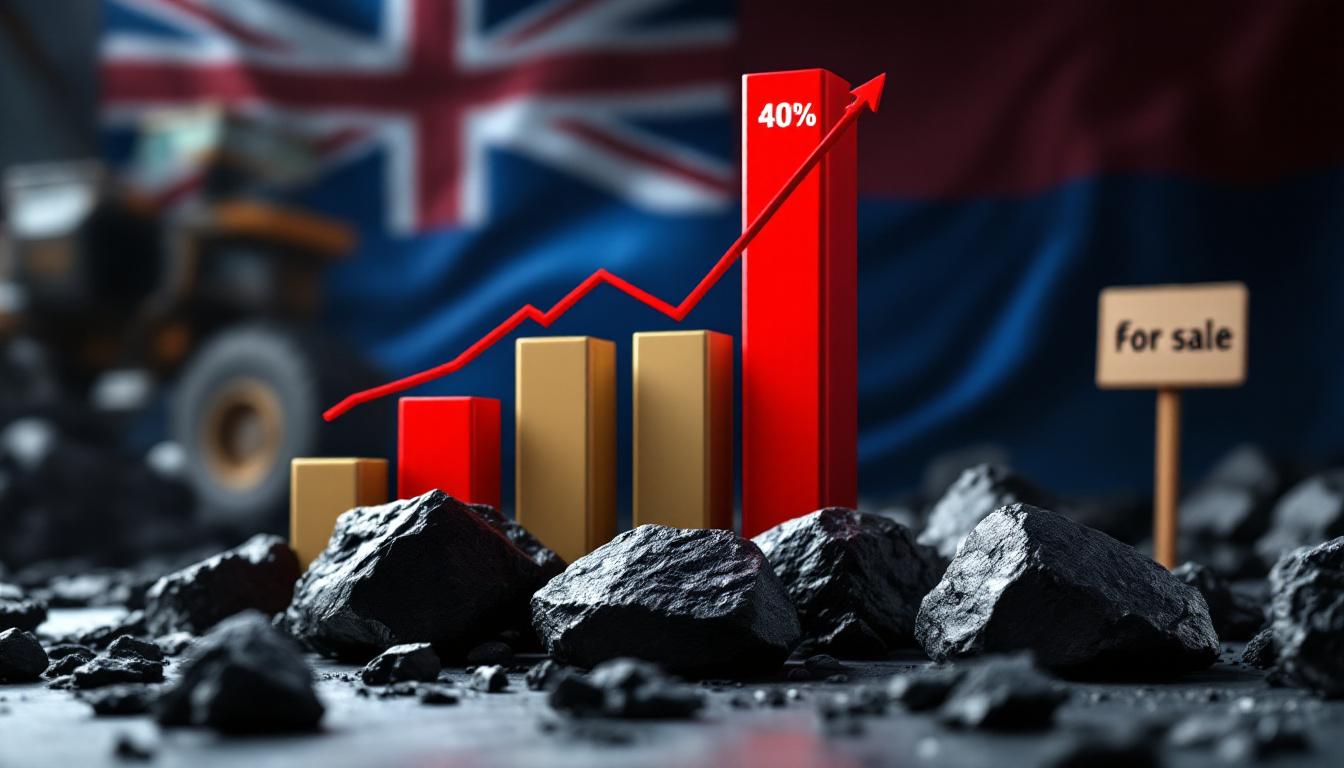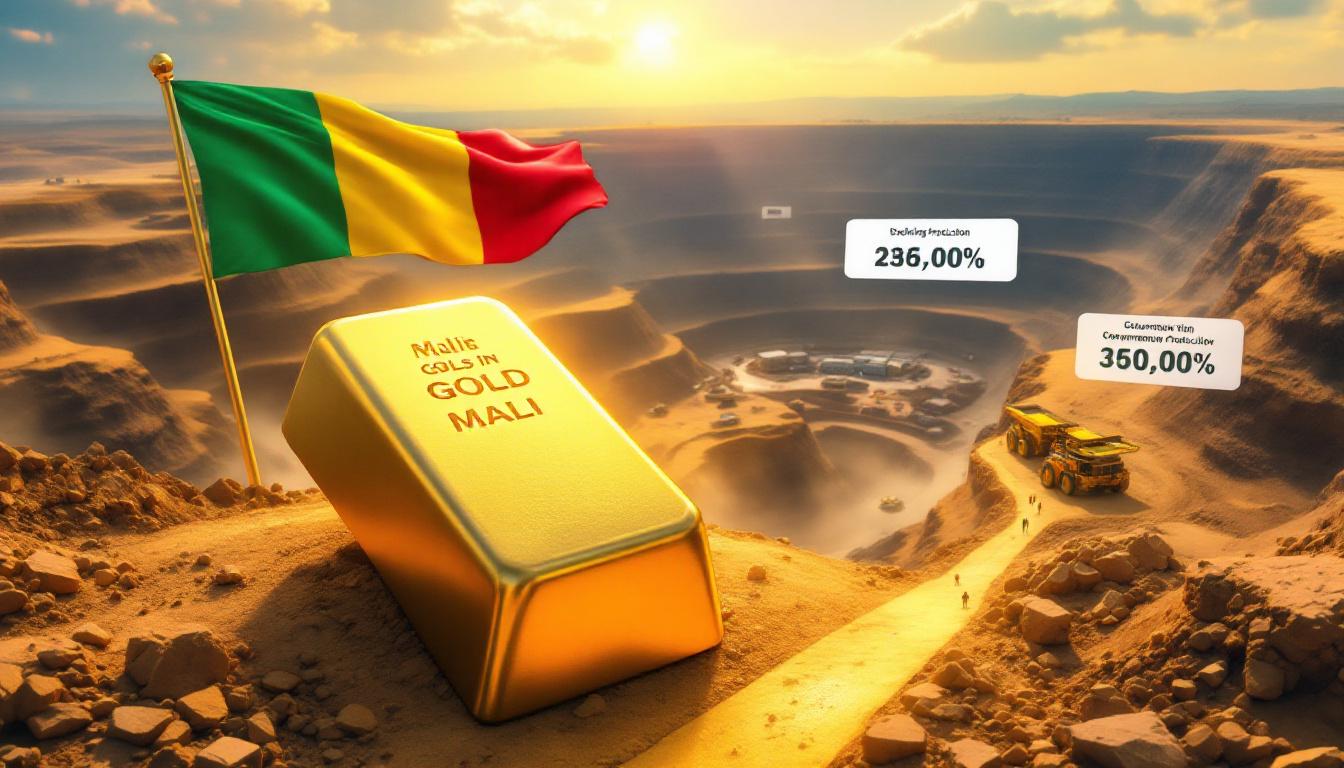Understanding the Rwanda-DRC Peace Deal: A Turning Point or Another Failed Attempt?
The signing of the Rwanda-Democratic Republic of Congo peace agreement on June 28, 2025, marks what could be a historic turning point in one of Africa's longest-running conflicts. Brokered by the United States under President Donald Trump's administration, the deal aims to end three decades of bloodshed in eastern Congo—a conflict that has claimed millions of lives and destabilized the entire Great Lakes region.
But with the powerful M23 rebel group refusing to recognize the agreement, many observers question whether this latest diplomatic effort will succeed where numerous previous peace initiatives have failed. In light of Trump's mineral order, this deal represents a strategic effort to secure access to the region's vast natural resources.
What is the Rwanda-DRC Peace Agreement?
The Rwanda-DRC Peace Agreement represents the culmination of months of intensive diplomatic efforts spearheaded by the United States. Signed in the Treaty Room of the US State Department, the agreement brings together two nations whose relationship has been characterized by hostility and proxy warfare for nearly 30 years.
Key Components of the 2025 Peace Deal
At its core, the agreement contains several critical provisions designed to address the root causes of the conflict:
- Mutual recognition of territorial integrity for both nations
- Explicit prohibition of cross-border hostilities
- Detailed disengagement protocols for forces in conflict zones
- Comprehensive disarmament procedures for non-state armed groups
- Conditional integration pathways for former rebels into civilian life or military structures
- Verification mechanisms to ensure compliance
"Today, the violence and destruction comes to an end, and the entire region begins a new chapter of hope and opportunity," declared President Trump at the signing ceremony, underscoring the ambitious scope of the agreement.
Major Stakeholders in the Agreement
The agreement brings together key players whose cooperation is essential for any lasting peace:
- Democratic Republic of Congo (DRC), represented by Foreign Minister Therese Kayikwamba Wagner
- Rwanda, represented by Foreign Minister Olivier Nduhungirehe
- United States, with Secretary of State Marco Rubio facilitating the signing ceremony
- United Nations, whose MONUSCO peacekeeping mission remains active in the region
Notably absent from the negotiating table was the M23 rebel group, which currently controls significant territory in eastern Congo, including the strategic cities of Goma and Bukavu. This absence casts a significant shadow over the agreement's prospects for success.
"An important moment after 30 years of war," Secretary Rubio characterized the signing, though many diplomatic observers note that implementation will face substantial challenges without buy-in from all armed actors on the ground.
Why Has Conflict Persisted in Eastern Congo?
Understanding the persistence of conflict in eastern Congo requires examining the complex historical, ethnic, and economic factors that have fueled three decades of violence in one of Africa's most resource-rich regions.
Historical Roots of the Conflict
The current conflict traces its origins to the aftermath of Rwanda's devastating 1994 genocide, during which between 500,000 and 1 million ethnic Tutsis, moderate Hutus, and Indigenous Twa were systematically killed over a 100-day period. Following the genocide:
- Nearly 2 million Hutus fled to neighboring Congo (then Zaire), fearing reprisals from the Tutsi-led forces that halted the genocide and seized power
- Rwanda has consistently claimed that among these refugees were those who participated in the genocide
- Successive Rwandan governments have accused elements of the Congolese army of harboring and protecting these groups
- This dynamic set the stage for repeated Rwandan military interventions into eastern Congo
These historical grievances created an environment where armed groups proliferated, often fighting for control of mineral-rich territories while claiming to protect ethnic communities.
Devastating Human Impact
The human cost of this protracted conflict has been catastrophic:
- Approximately 6 million people have died through direct attacks, conflict-induced famines, and disease outbreaks
- Currently 7 million people are displaced within the DRC—one of the world's largest internal displacement crises
- The United Nations describes it as "one of the most protracted, complex, serious humanitarian crises on Earth"
- Early 2025 saw horrific scenes following major M23 advances, with bodies left on streets in contested areas
The conflict has also normalized sexual violence as a weapon of war, with eastern Congo earning the tragic distinction as "the rape capital of the world" according to UN reports. Health systems have collapsed in many areas, leaving millions without access to basic medical care.
The Role of Armed Groups
The security landscape in eastern Congo is extraordinarily complex:
- Over 100 armed groups currently operate in the region
- The M23 rebel group has emerged as the most powerful non-state actor, controlling major cities
- Rwanda allegedly deploys up to 4,000 troops in support of M23 operations
- Rwanda maintains it is defending its territorial interests against hostile forces
- The Congo River Alliance coalition includes M23 and several other rebel factions
This proliferation of armed groups has created a chaotic environment where establishing state authority has proven nearly impossible. Civilians often find themselves caught between multiple armed factions claiming to provide protection while exploiting local resources.
What Makes This Peace Deal Different?
Previous peace initiatives have repeatedly failed to bring lasting stability to eastern Congo. The 2025 agreement, however, contains several elements that distinguish it from earlier efforts and may increase its chances of success.
US Strategic Interests in the Region
Unlike previous agreements brokered by African regional bodies or the UN, the direct involvement of the United States brings significant diplomatic and economic weight:
- Critical minerals energy security is explicitly acknowledged as a central component of the agreement
- The DRC holds an estimated $36.8 trillion AUD ($24 trillion USD) worth of untapped mineral resources
- The United States is actively competing with China for strategic influence across Africa
- The Trump administration has prioritized securing access to Congo's cobalt, copper, and other minerals essential for advanced technology
- Separate negotiations between US and DRC governments regarding preferential mineral access are ongoing
"The US has proven to be a reliable partner," noted DRC Foreign Minister Wagner during the signing ceremony, signaling Kinshasa's pivot toward Washington as a counterbalance to Beijing's extensive economic presence in the country.
Enforcement Mechanisms
The agreement contains stronger enforcement provisions than previous peace deals:
- President Trump explicitly warned of "very severe penalties, financial and otherwise" for violations
- US commitment appears tied to successful implementation and mineral access arrangements
- Parallel talks in Qatar aim to bring Congo's government and M23 rebels to a complementary agreement
- Rwanda has agreed to lift what it terms "defensive measures"—potentially including troop withdrawals
- International monitoring mechanisms will verify compliance with key provisions
These enforcement elements reflect a recognition that previous agreements often failed due to lack of consequences for non-compliance and insufficient verification mechanisms.
Diplomatic Significance
The deal represents a significant shift in US policy toward Central Africa:
- First major US-brokered peace initiative in the region in recent years
- Signed beneath a portrait of Colin Powell, the first African-American Secretary of State
- Secretary Rubio characterized it as "an important moment after 30 years of war"
- Signals increased US willingness to counter Chinese influence in mineral-rich African nations
- Represents a more transactional approach to African diplomacy under the Trump administration
The ceremony's symbolism was carefully choreographed to emphasize American commitment to African stability while simultaneously advancing US economic interests in critical mineral supply chains.
Will the Peace Deal Actually End the Conflict?
Despite the diplomatic milestone, significant obstacles remain before eastern Congo can achieve lasting peace. The most immediate challenge comes from armed groups who were not party to the negotiations.
M23's Opposition to the Agreement
The most powerful rebel faction has explicitly rejected the agreement:
- M23 spokesperson Oscar Balinda stated they "won't abide by the deal"
- The rebel group claims they weren't directly involved in the deal's development
- Corneille Nangaa, leader of the Congo River Alliance coalition, stated in March: "anything regarding us which is done without us, it's against us"
- M23 continues to demand direct peace talks with the DRC government
- The group maintains control of key cities including Goma and Bukavu
Without M23's participation, implementing the agreement in areas under rebel control appears highly problematic, if not impossible. The parallel Qatar negotiations represent an attempt to address this critical gap.
Cautious Optimism from Signatories
The diplomatic representatives who signed the agreement expressed tempered hope:
- DRC's Wagner acknowledged: "Some wounds will heal, but they will never fully disappear"
- Rwanda's Nduhungirehe spoke of "a great deal of uncertainty" ahead
- Both ministers stressed that significant work remains to be done
- All parties recognized that previous peace agreements in the region have consistently failed
This careful diplomatic language reflects the enormous complexity of ending a conflict with so many dimensions—historical grievances, ethnic tensions, and competition for valuable resources.
Expert Analysis on Prospects for Success
Independent observers offer mixed assessments:
- Christian Moleka of the Dypol think tank called the agreement a "major turning point" but warned it "cannot establish lasting peace without justice and reparation"
- Most analysts don't believe fighting will quickly end without M23's participation
- Hope Muhinuka, an activist from North Kivu, cautioned: "I don't think the Americans should be trusted 100 percent"
- Many experts note the deal largely ignores accountability for war crimes and justice for victims
The agreement's focus on stability and mineral access, rather than accountability for past atrocities, has drawn criticism from human rights advocates who argue that lasting peace requires addressing grievances and establishing justice mechanisms.
What Role Do Critical Minerals Play in the Agreement?
While officially framed as a peace initiative, the agreement's economic dimensions—particularly access to the DRC's vast mineral wealth—represent a crucial motivating factor for all parties involved.
Strategic Importance of Congo's Resources
The DRC's mineral endowment is extraordinary in both scale and strategic importance:
- Vast deposits of cobalt, copper, coltan, and other critical minerals essential for modern technology
- Resources vital for smartphones, electric vehicles, and advanced military equipment
- US Department of Commerce estimates value at $24 trillion USD (approximately $36.8 trillion AUD)
- DRC produces over 70% of the world's cobalt, a crucial component in lithium-ion batteries
- Chinese companies have dominated Congo's minerals sector for years through major investments
These resources have become increasingly strategic as the global transition to green energy technologies accelerates demand for batteries and other mineral-intensive components.
Economic Motivations Behind US Involvement
The Trump administration's interest in the peace process appears closely linked to economic objectives:
- Explicit focus on countering Chinese influence in Africa's resource sector
- US companies seeking to secure supply chains for critical minerals
- Many Congolese observers view the deal primarily as a US mineral access strategy
- DRC reached out to Trump for support against rebels, reportedly offering preferential mineral access
- Separate negotiations on extraction rights are proceeding alongside the peace process
"It is up to us to capitalise on all we have now as an opportunity," noted activist Hope Muhinuka, reflecting a widespread recognition that Congo's resources could finally benefit its people if properly managed.
Regional Resource Exploitation Concerns
The agreement addresses longstanding accusations about illegal mineral exploitation:
- Rwanda has long been accused of exploiting eastern Congo's critical minerals
- Allegations persist that conflict has been perpetuated to maintain illegal mining operations
- Serious questions remain about whether mineral wealth will benefit local populations
- Environmental impacts of increased mining activity represent a growing concern
- Transparency mechanisms for resource governance remain underdeveloped
The peace deal aims to create a framework for legitimate mineral development, but critics note that it lacks specific provisions for ensuring local communities benefit from resource extraction in their territories. Furthermore, many experts believe mineral beneficiation opportunities could significantly enhance economic outcomes for local populations.
What Happens Next in the Peace Process?
Signing the agreement represents only the beginning of a complex implementation process that will face numerous challenges in the coming months and years.
Implementation Challenges
Several major hurdles must be overcome:
- Disarmament of non-state armed groups remains extremely difficult without M23 cooperation
- Verification of Rwandan forces' withdrawal from Congo will require robust monitoring
- Integration of rebel fighters into society or military structures faces logistical and political obstacles
- Addressing root causes of ethnic tensions and territorial disputes requires long-term commitment
- Building state capacity in areas long controlled by armed groups presents governance challenges
Each of these elements contains potential spoilers that could derail the entire peace process if not carefully managed with international support and monitoring. The US-China trade impacts further complicate the regional dynamics as both superpowers compete for influence and resource access.
Parallel Peace Initiatives
The US-brokered agreement exists alongside other important peace efforts:
- Ongoing talks in Qatar between Congo and M23 rebels seek complementary arrangements
- Regional efforts through the African Union and neighboring countries continue
- The UN peacekeeping mission (MONUSCO) with approximately 14,000 personnel maintains operations
- Local peace-building initiatives at the community level work to heal inter-ethnic divisions
- Civil society organizations advocate for inclusive approaches to reconciliation
Coordination between these various tracks represents a significant diplomatic challenge, but also creates multiple pathways toward peace even if individual efforts encounter obstacles.
Justice and Reconciliation Needs
The agreement largely sidesteps critical questions about accountability:
- Accountability for war crimes and human rights abuses remains unaddressed
- Reparations for victims do not feature prominently in current agreement provisions
- Balancing peace with justice requirements continues to generate tension
- Long-term reconciliation processes between communities will require sustained support
- Truth-telling mechanisms to acknowledge past atrocities have not been established
Many observers, including Christian Moleka of the Dypol think tank, argue that the agreement "ignores war crimes and justice for victims," potentially undermining its long-term sustainability if grievances remain unaddressed.
FAQs About the Rwanda-DRC Conflict
Why is this conflict often called "Africa's World War"?
The conflict in eastern Congo has involved multiple African nations either directly or through proxy forces. At its height in the late 1990s and early 2000s, it drew in military forces from Rwanda, Uganda, Zimbabwe, Angola, Namibia, and others, earning it the nickname "Africa's World War" due to the continental scale of involvement and the estimated 6 million deaths it has caused—the highest conflict death toll since World War II.
How has the conflict affected civilian populations?
Beyond the estimated 6 million deaths, the conflict has caused:
- Massive displacement (7 million people currently displaced)
- Widespread sexual violence used as a weapon of war
- Recruitment of child soldiers by multiple armed groups
- Destruction of infrastructure including schools and hospitals
- Collapse of healthcare systems leading to preventable disease outbreaks
- Summary executions of children and other civilians by armed groups including M23
UN human rights reports have documented extensive atrocities against civilians, including "summary executions of children" by M23 forces during their territorial advances in eastern Congo.
What is the UN's role in eastern Congo?
The United Nations has maintained a peacekeeping mission in the DRC since 1999 (currently MONUSCO). With approximately 14,000 personnel and an annual budget exceeding $1 billion, it's one of the largest and most expensive UN peacekeeping operations globally. However, it has faced persistent criticism for failing to protect civilians effectively and has been targeted by protests from local populations frustrated by continued violence despite the UN presence.
How do critical minerals factor into global technology supply chains?
The DRC produces over 70% of the world's cobalt, a mineral essential for lithium-ion batteries used in electric vehicles and electronics. It also has significant deposits of coltan (used in smartphones), copper, tin, and other minerals critical to modern technology. This makes the country strategically important to global technology supply chains, particularly as demand for electric vehicles and renewable energy technologies accelerates worldwide. Recent gold market trends also influence regional economic dynamics.
Comparison Table: Previous Peace Agreements vs. 2025 Deal
| Aspect | Previous Agreements | 2025 US-Mediated Deal |
|---|---|---|
| International Broker | African Union, UN | United States |
| Economic Incentives | Limited | Critical minerals access for US |
| M23 Involvement | Some included direct talks | Excluded from negotiations |
| Enforcement Mechanism | Limited | US threatens "severe penalties" |
| Rwanda Troop Withdrawal | Ambiguous commitments | Agreement to lift "defensive measures" |
| Justice Provisions | Some accountability measures | Limited focus on war crimes |
| Mineral Resource Governance | Not central to agreements | Central component |
| Regional Power Balance | Maintained status quo | Potential US counterbalance to China |
Further Exploration
Readers interested in learning more about the complex conflict in the Democratic Republic of Congo can also explore related educational content from ABC News, which offers additional perspectives on the historical context and current developments in the region. Understanding the interplay between mineral resources, ethnic tensions, and international interests provides crucial context for evaluating whether this latest peace initiative truly represents a new beginning for a
Want to Stay Ahead of Major Mining Discoveries?
Discovery Alert's proprietary Discovery IQ model instantly notifies investors of significant ASX mineral discoveries, turning complex data into actionable investment opportunities that could deliver substantial returns. Explore Discovery Alert's dedicated discoveries page to see how major mineral discoveries have historically transformed small companies into market leaders.




